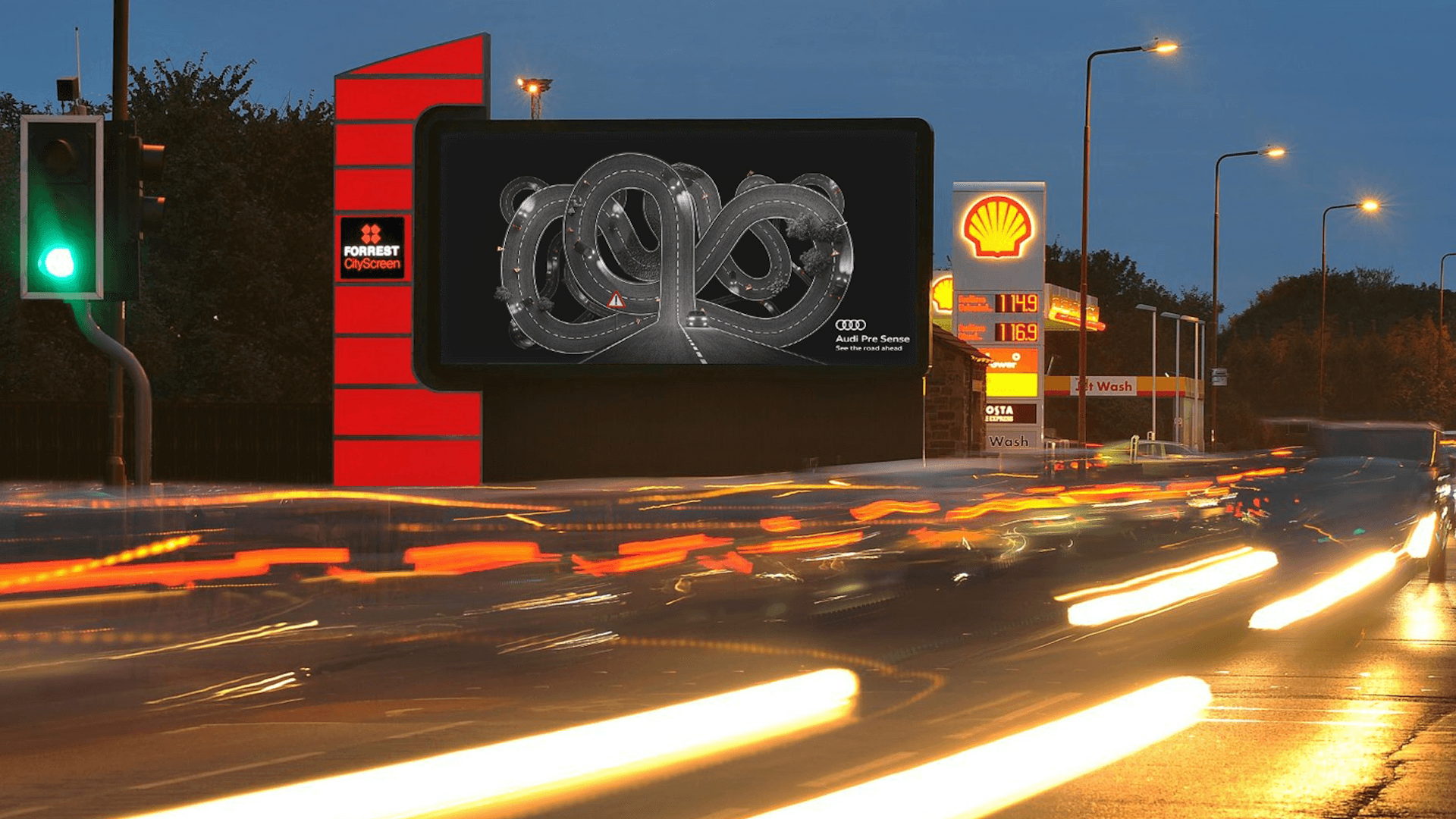Audi campaign on UK digital billboards tracks traffic and weather
This is the latest in a series of campaigns around the world where the dowdy static billboard is becoming a kind of sensory visual response.

You may still be thinking of billboards as big, static signs. If so, time to reboot that vision, because they are becoming giant screens that respond to their environment.
The latest case in point: a campaign in the UK for Audi. Developed by creative agency BBH and digital-out-of-home production shop Grand Visual, the campaign began earlier this month and continues through this weekend on 211 digital screens in nine cities, including London, Birmingham and Manchester.
The effort is designed to showcase the Sixth Sense technologies that come standard on Audis: the Quattro on-demand four-wheel drive and the Pre-Sense alerts that you are driving too fast or there is a potential accident down the road.
When the traffic is heavy (in terms of travel time) in front of a given digital billboard, the Pre-Sense imagery shows up — a pretzel-like road with a confidently driving car. (See top of this page). If the traffic is normal or light, the supporting platform then looks at weather conditions. If the weather is bad — as in rain, snow or hail — it displays the Quattro imagery of all-wheel drive handling the elements.
And if both the traffic and weather are fine, it shows the default image: six images representing the Six Sense tech:
GrandVisual Technical Director Keira Kane told me that the weather data feed comes from the UK government and the traffic data from Google.
She added that Grand Visual has done “probably a couple of dozen” similar campaigns over the last year, where environmental and other data triggered the imagery.
In one such campaign for Virgin Train this past September, digital billboards showed real-time comparisons of car and train travel times in three UK metropolitan areas.
Other advertisers are also getting into this channel. Last summer, for instance, a US campaign from National Geographic and the Outdoor Advertising Association of America let tourists on the street in front of digital billboards take selfies, which were then curated by the organizers for display on those billboards.
And, in Canada during the summer of 2016, Dannon Yogurt imagery and messaging was triggered by the speed of passing traffic.
Contributing authors are invited to create content for MarTech and are chosen for their expertise and contribution to the martech community. Our contributors work under the oversight of the editorial staff and contributions are checked for quality and relevance to our readers. The opinions they express are their own.
Related stories
